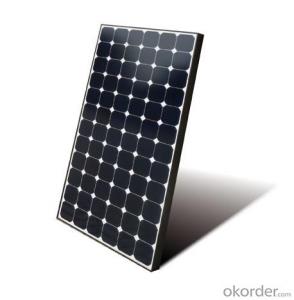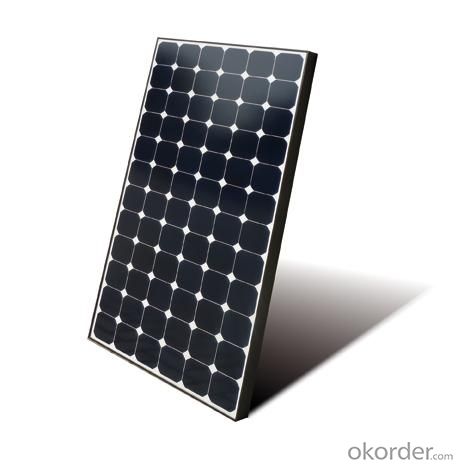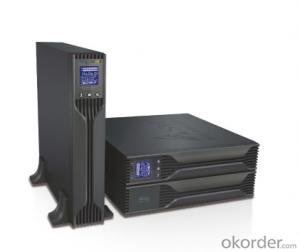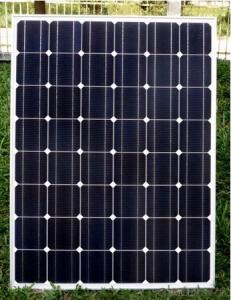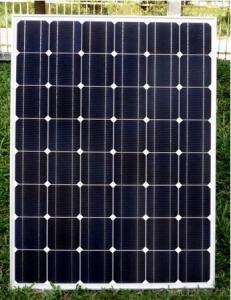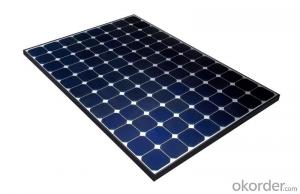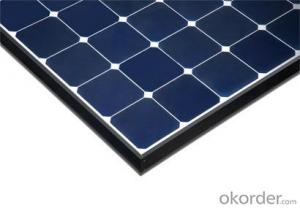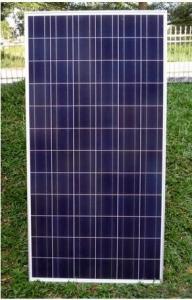Building Integrated Solar Energy Systems - CNBM On Grid System 5000W with Certificate UL, TUV, CE
- Loading Port:
- Shanghai
- Payment Terms:
- TT OR LC
- Min Order Qty:
- 100 watt
- Supply Capability:
- 1000 watt/month
OKorder Service Pledge
OKorder Financial Service
You Might Also Like
Specification
CNBM On Grid System 5000W with Certificate UL TUV CE
Product description
They range from small residential and commercial rooftop systems to large utility-scale solar power stations. Unlike stand-alone power systems, a grid-connected system rarely includes an integrated battery solution, as they are still very expensive. When conditions are right, the grid-connected PV system supplies the excess power, beyond consumption by the connected load, to the utility grid.
Connection of the photovoltaic power system can be done only through an interconnection agreement between the consumer and the utility company. The agreement details the various safety standards to be followed during the connection.[4]
Systems such as Net Metering and Feed-in Tariff which are offered by some system operators, can offset a customers electricity usage costs. In some locations though, grid technologies cannot cope with distributed generation feeding into the grid, so the export of surplus electricity is not possible and that surplus is earthed.
Grid-connected PV systems are comparatively easier to install as they do not require a battery system.[1][6]
Grid interconnection of photovoltaic (PV) power generation systems has the advantage of effective utilization of generated power because there are no storage losses involved.[7]
Grid-connected PV can cause issues with voltage regulation. The traditional grid operates under the assumption of one-way, or radial, flow. But electricity injected into the grid increases voltage, and can drive levels outside the acceptable bandwidth of ±5%.[8]
Grid-connected PV can compromise power quality. PV’s intermittent nature means rapid changes in voltage. This not only wears out voltage regulators due to frequent adjusting, but also can result in voltage flicker.[9]
Connecting to the grid poses many protection-related challenges. In addition to islanding, as mentioned above, too high levels of grid-connected PV result in problems like relay desensitization, nuisance tripping, interference with automatic reclosers, and ferroresonance.[10]
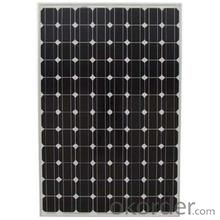
Application
Industrial
Commercial
Residential
Feature
Residential, grid-connected rooftop systems which have a capacity more than 10 kilowatts can meet the load of most consumers.[2] They can feed excess power to the grid where it is consumed by other users. The feedback is done through a meter to monitor power transferred. Photovoltaic wattage may be less than average consumption, in which case the consumer will continue to purchase grid energy, but a lesser amount than previously. If photovoltaic wattage substantially exceeds average consumption, the energy produced by the panels will be much in excess of the demand. In this case, the excess power can yield revenue by selling it to the grid. Depending on their agreement with their local grid energy company, the consumer only needs to pay the cost of electricity consumed less the value of electricity generated. This will be a negative number if more electricity is generated than consumed.[3] Additionally, in some cases, cash incentives are paid from the grid operator to the consumer.
Packaging
With carton and box
- Q: Can solar energy systems be used for powering outdoor appliances?
- Yes, solar energy systems can be used to power outdoor appliances. Solar panels collect sunlight and convert it into electricity, which can then be used to power various appliances such as outdoor lights, fans, heaters, or even charging stations for electronic devices. This renewable energy source is ideal for outdoor use as it eliminates the need for traditional power sources and reduces carbon emissions.
- Q: Are there any environmental benefits of solar energy systems?
- Yes, there are numerous environmental benefits of solar energy systems. Firstly, solar energy is a clean and renewable energy source, meaning it does not emit greenhouse gases or other harmful pollutants into the atmosphere. This helps to reduce air pollution and combat climate change, as solar power generates electricity without any carbon emissions. Moreover, solar energy systems require minimal water usage compared to other traditional forms of energy generation, such as coal or natural gas power plants. This is particularly important in regions facing water scarcity or droughts, as solar power helps to conserve water resources. Additionally, solar energy systems help to reduce reliance on fossil fuels, which are finite resources and contribute to the depletion of natural resources. By generating electricity from sunlight, solar power reduces the need for extracting and burning fossil fuels, conserving these valuable resources for future generations. Furthermore, solar energy systems can be installed on rooftops or in open areas, minimizing the need for large-scale land clearance or habitat destruction. This helps to protect ecosystems and preserve biodiversity. Overall, solar energy systems offer significant environmental benefits by reducing greenhouse gas emissions, conserving water resources, minimizing reliance on fossil fuels, and preserving ecosystems. By transitioning to solar power, we can contribute to a cleaner, more sustainable future for our planet.
- Q: How do solar energy systems impact roof maintenance and repairs?
- Roof maintenance and repairs can be affected both positively and negatively by solar energy systems. On the positive side, solar panels offer an extra layer of defense for the roof, shielding it from harsh weather and harmful UV radiation. This protective measure helps extend the roof's lifespan, minimizing the need for frequent repairs or replacements. Moreover, solar panels prevent debris accumulation, reducing the risk of damage caused by fallen leaves, branches, or other objects. However, there are certain considerations to keep in mind regarding roof maintenance and repairs with solar energy systems. The installation of solar panels typically involves drilling holes into the roof to secure the mounting brackets. If not properly sealed, this process may result in leaks. Hence, it is crucial to collaborate with experienced and qualified installers who understand the significance of proper sealing and waterproofing. Another aspect to consider is the accessibility of the roof. Solar panels cover a significant portion of the roof surface, making it more challenging to access and inspect. Routine roof maintenance tasks like gutter cleaning, debris removal, and damage inspection may require additional effort and specialized equipment when solar panels are present. When it comes to repairs, solar panels can complicate the process. If a repair is necessary on the roof, the solar panels may need to be temporarily removed to access the damaged area. This can increase the time and cost involved in the repair process. Additionally, it is crucial to coordinate with the solar panel manufacturer or installer to ensure that any repairs are conducted in a manner that does not void the warranty or impact the performance of the solar system. In conclusion, solar energy systems can positively impact roof maintenance by providing additional protection and reducing the risk of damage. Nonetheless, it is important to collaborate with experienced installers, ensure proper sealing, and consider the implications on accessibility and repairs when installing solar panels.
- Q: How do solar energy systems impact the energy consumption of buildings?
- Solar energy systems have a significant impact on reducing the energy consumption of buildings. By harnessing the power of the sun, these systems generate clean and renewable electricity, which can be used to power various electrical appliances and systems within the building. This reduces the reliance on traditional energy sources, such as fossil fuels, thereby lowering energy consumption and associated greenhouse gas emissions. Additionally, solar energy systems can help buildings become more self-sufficient by generating enough electricity to meet a portion or even the entirety of their energy needs, resulting in reduced energy bills and increased energy efficiency.
- Q: What is the role of solar energy systems in achieving energy independence?
- Solar energy systems play a critical role in achieving energy independence by harnessing the power of the sun to generate clean and renewable electricity. They contribute to reducing reliance on fossil fuels, decreasing greenhouse gas emissions, and diversifying the energy mix. Solar energy systems allow individuals, communities, and even entire nations to generate their own electricity, reducing the need for importing energy from other sources. By promoting energy self-sufficiency, solar power systems contribute to greater energy independence and sustainability.
- Q: Can a solar energy system be installed on a parking garage or structure?
- Yes, a solar energy system can definitely be installed on a parking garage or structure. In fact, parking garages and structures are often ideal locations for solar installations due to their large surface areas and access to sunlight. Solar panels can be mounted on the roof or exterior walls of parking structures, maximizing the utilization of available space. Additionally, the elevated position of parking garages allows for better exposure to sunlight, resulting in more efficient solar energy generation. Moreover, installing a solar energy system on a parking garage or structure can provide multiple benefits, such as generating clean and renewable energy, reducing electricity costs, and offsetting carbon emissions. This makes it a sustainable and environmentally-friendly choice for energy production.
- Q: How does the efficiency of solar panels vary across different installation angles?
- The efficiency of solar panels varies across different installation angles due to the changing angle of incidence of sunlight. Solar panels are most efficient when they are installed at an angle that allows them to receive direct sunlight perpendicular to their surface. When the installation angle deviates from this optimal position, the efficiency decreases as the angle of incidence increases or decreases. Hence, finding the right installation angle is crucial to maximize the efficiency of solar panels and ensure optimal energy generation.
- Q: Can solar energy be used for heating?
- Yes, solar energy can be used for heating. Solar thermal systems can capture the sun's energy and convert it into heat, which can be used for heating water, spaces, and even for industrial processes.
- Q: Can solar energy systems be used for powering off-grid construction sites?
- Yes, solar energy systems can be used to power off-grid construction sites. These systems can provide a reliable and sustainable source of electricity for various construction site needs, such as lighting, tools, and equipment. They are cost-effective, environmentally friendly, and can be easily installed and maintained.
- Q: Can solar energy systems be used off-grid?
- Yes, solar energy systems can be used off-grid. Off-grid solar systems are designed to generate and store electricity independently without being connected to the traditional power grid. These systems typically consist of solar panels, batteries for energy storage, and inverters to convert the stored energy into usable electricity. Off-grid solar energy systems are particularly useful in remote areas where access to the grid is limited or unavailable, providing a sustainable and reliable source of power.
Send your message to us
Building Integrated Solar Energy Systems - CNBM On Grid System 5000W with Certificate UL, TUV, CE
- Loading Port:
- Shanghai
- Payment Terms:
- TT OR LC
- Min Order Qty:
- 100 watt
- Supply Capability:
- 1000 watt/month
OKorder Service Pledge
OKorder Financial Service
Similar products
Hot products
Hot Searches
Related keywords
